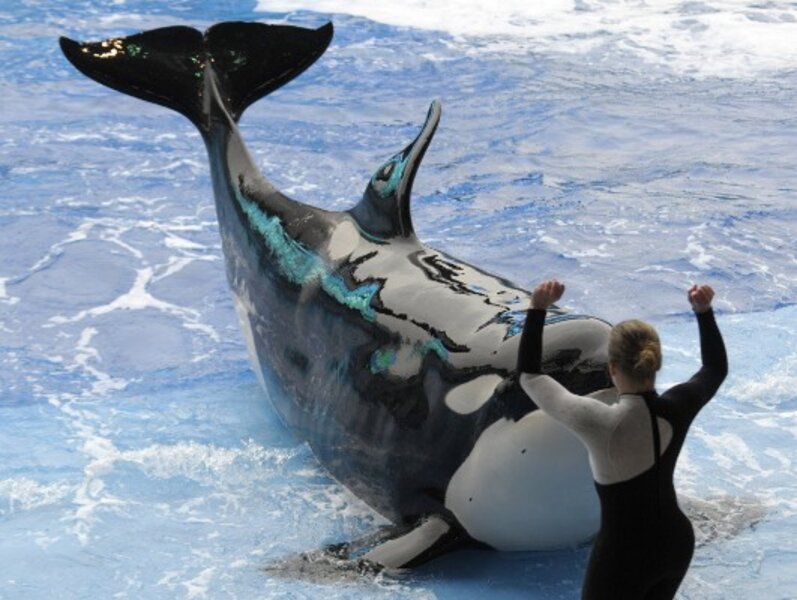SeaWorld resumes shows with killer whales – but no 'Tilikum'
Shows featuring killer whales reopened at SeaWorld marine parks Saturday, days after the tragic death of whale trainer Dawn Brancheau in Orlando, Fla.
Are these shows a good idea? That's a debate that's flared this week after the tragedy.
Animal rights groups argue that the incident, in which Ms. Brancheau was dragged under water, is a reminder that these giants of the sea don't belong in captivity as performers. But SeaWorld and its defenders argue that the shows play a useful educational role that builds public appreciation for animals that they might not see in the wild.
Park managers in Orlando decided not to use the male orca, Tilikum, involved in Brancheau's death, on Saturday. And trainers did not get into the water – riding or jumping with the whales – as they have typically done in what has become a signature event for the theme parks.
The show included what viewers described as a moving tribute to Brancheau. SeaWorld management has said that Tilikum will remain an active part of the shows, despite his absence on Saturday.
The debate pits two concerns against one another. First is that of animal rights, as well as for the safety of trainers. Second is what many perceive as educational value for humans of an up-close – sometimes splashing-wet close – experience with some of the oceans’ most powerful creatures.
"The educational value of what we're doing is irreplaceable," said Jack Hanna, an animal trainer and former zoo director who knew Brancheau and was interviewed Saturday on MSNBC.
She "would want that work continued," he said.
Mr. Hanna said he did not see evidence that the attack – in which the whale grabbed Brancheau by the ponytail – involved aggression by the whale. And he described proposals to transition captive whales into the wild as a "certain death sentence" for the animals. (Monitor report: How common are killer whale attacks?)
Some critics have suggested an intermediate option – putting the whales into ocean-based pens where they can experience something closer to their natural habitat.
Material from the Associated Press was used in this report.





